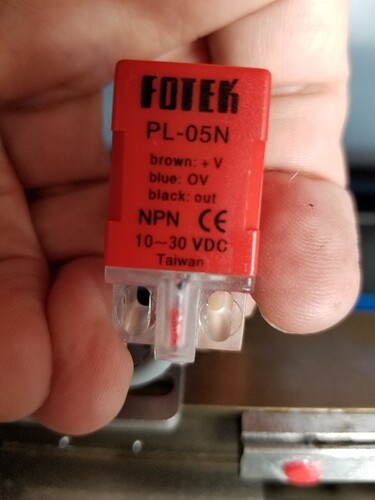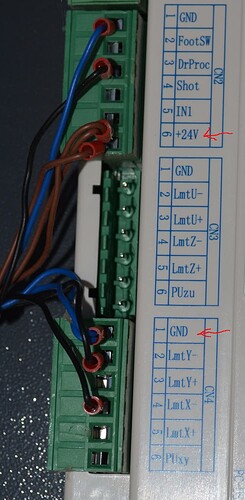Hello, I’m hoping to get some direction or confirmation on what my next steps are for this issue. Background, this is a 60W ebay machine (similar to OM Tech) with about 500 hours “laser” time and many more hours “on” time. Controller is a Ruida 6442S-B.
I had the X- limit switch fail during homing. When checking the original switch I had no red LED when using metal or a magnet on top of the switch. I replaced the switch and a short section of wire to the cable chain by soldering and heat shrinking the wires. The replacement switch failed within a week and limited use with the red LED staying lit constant. Fortunately I had thought to purchase additional replacements. Thinking I had a bad switch I changed that one out for another one. These were different so I used a magnet stack on the x gantry head to trigger the sensor as they weren’t adjustable(stuck on with 3M to the aluminum)
This one failed the next day; however, the switch would appear to function via the LED, but would not show the limit trigger on the controller. When checking voltage the output would show about 10v with nothing triggering it and ~12v with something triggering the switch. I replaced this switch and saw the same failure the next day. I was concerned the magnet was the issue so I swapped that out with a bolt and nut through the gantry. I loosely installed the wiring for the last switch as the continuous soldering was getting old. Today again I have a failed switch on the X- limit with a similar failure but no 10V on the output. The LED triggers but no X- limit on the controller.
I have replaced it again and the wires back to the mainboard just in case there was a wiring issue. During diagnosis I temporarily swapped the Y- limit switch but that one has yet to fail. I do see on the Ruida manual that they should be wired with the Puxy which appears to be 5v, but the switches in the machine show 10-30v and are wired to 24v. They were, until I just redid the wiring this last time wired to the same 24v power and ground circuits.
I am fully expecting to have my wife call me at work again tomorrow and tell me she had to nail the e-stop because the switch failed again. I believe my next step if it fails again is to swap out the mainboard unless anyone has any other suggestions.
Thanks,
Dip

